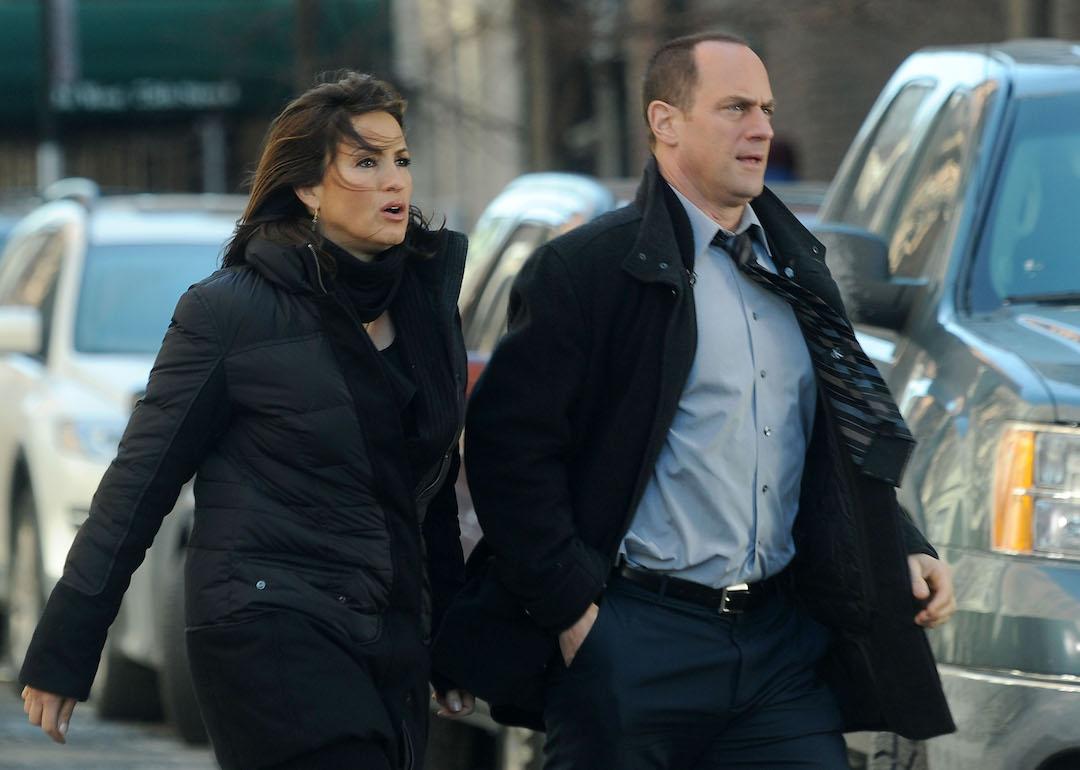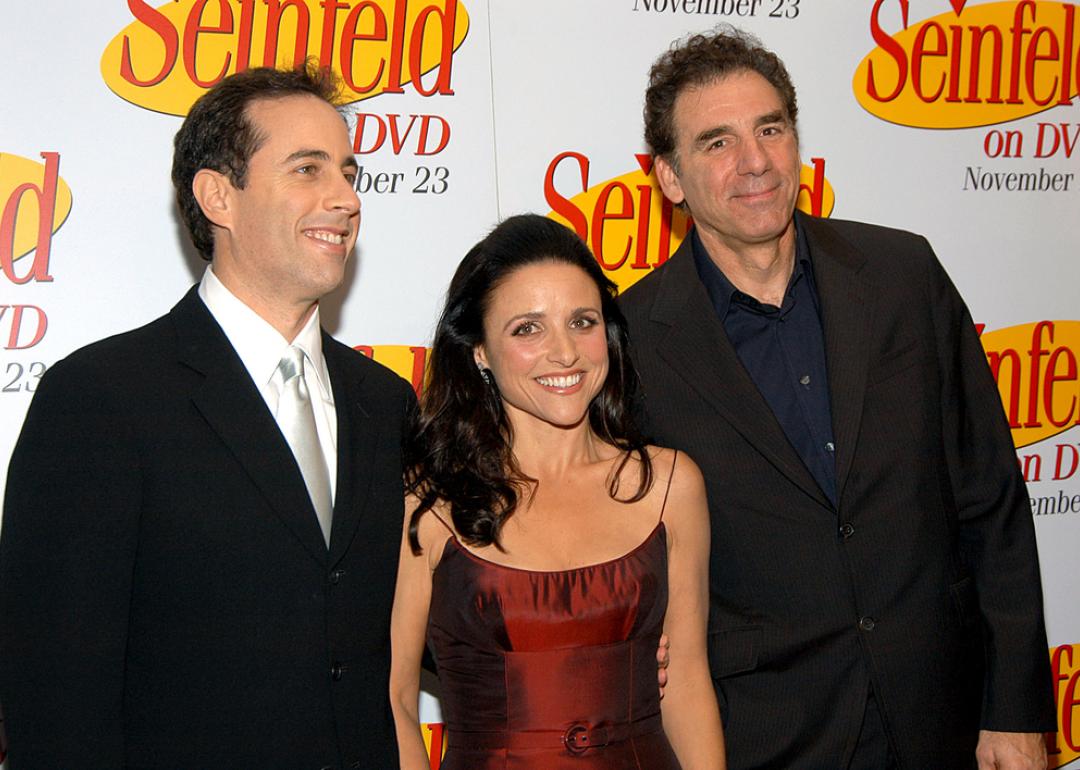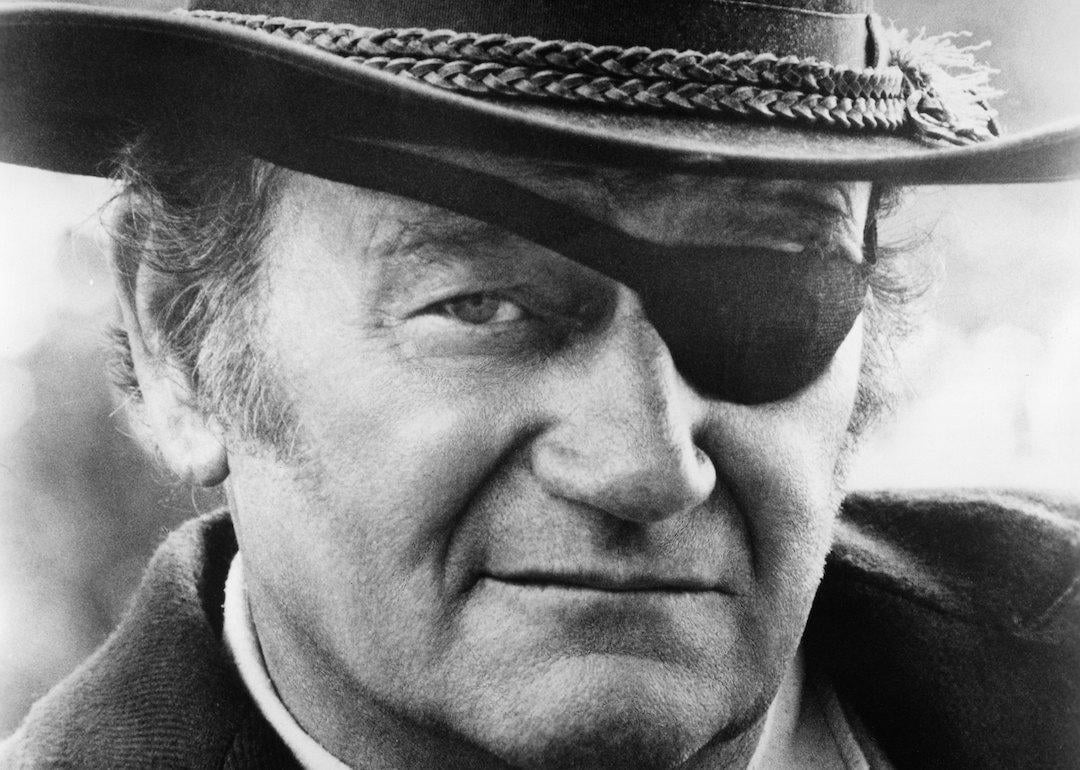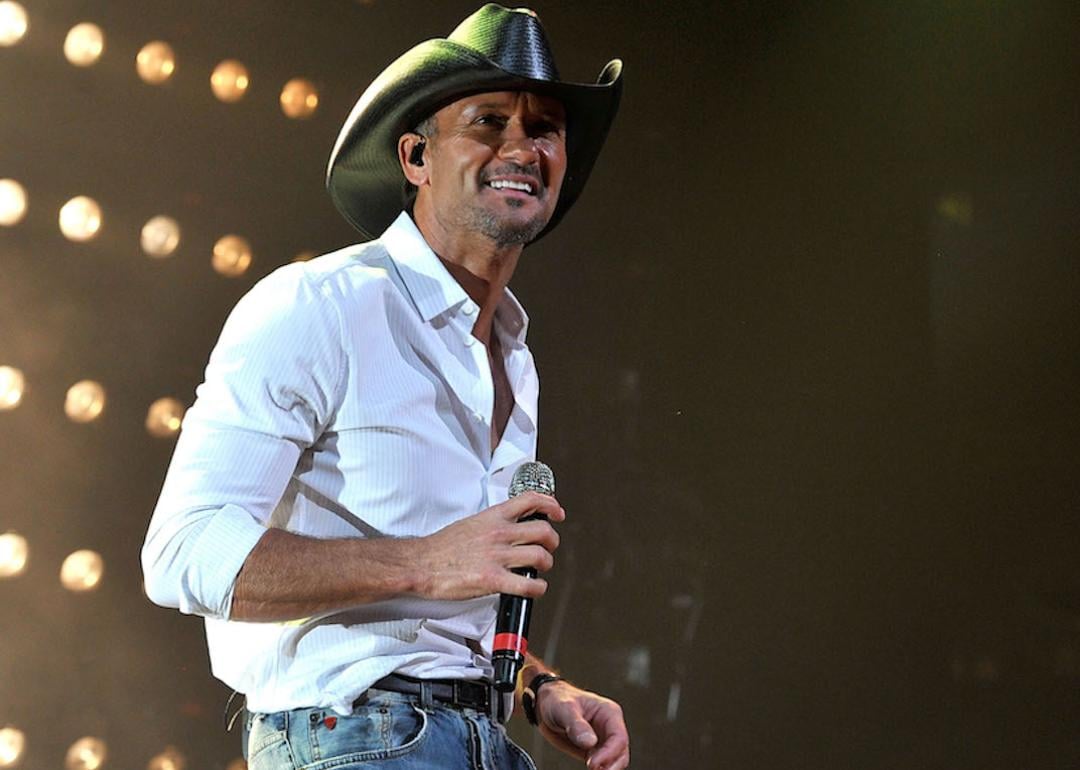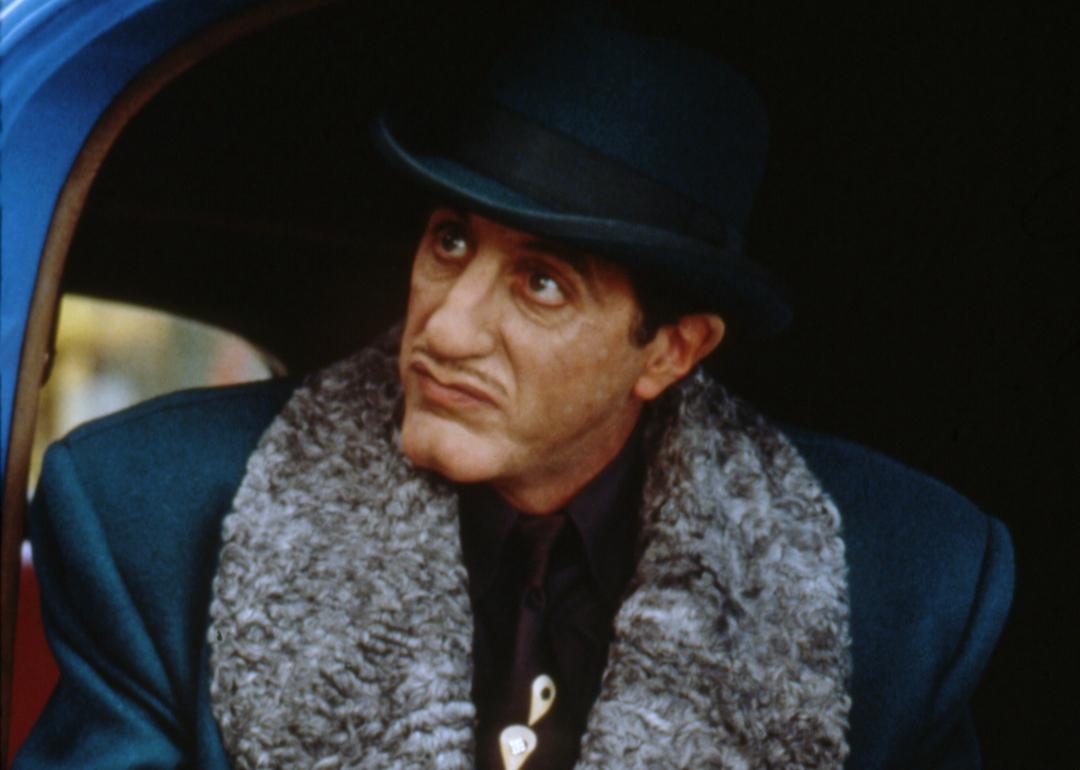
30 actors who looked unrecognizable in their roles
The concept of an actor "disappearing into" or becoming "unrecognizable for" a role is a long-standing awards trend. Indeed, the Academy has long awarded performers who go to great lengths to portray characters who are physically quite different from their natural appearance—think Christian Bale in "The Machinist" or Charlize Theron in "Monster."
The reasons why an actor might be called to do so vary. Some transform to play real-life figures, like Sydney Sweeney, who made headlines in late 2024 after bulking up for the role of professional boxer Christy Martin. In other cases, actors are called upon to don prosthetics and embody otherworldly-looking sci-fi and fantasy characters. Then again, makeup and a simple hairstyle change may be more than enough to pull off some roles—after Dwayne Johnson covered up his iconic tattoos and shaved head for the 2025 movie "The Smashing Machine," even the film's extras didn't recognize the former WWE star.
Of course, the practice of changing one's looks for a role isn't without its fair share of controversies. Actors playing characters that are races other than their own reflects a problematic history of racist caricatures like Blackface and yellowface, while male actors playing trans women in high-profile projects has been linked to real-life violence against trans women. Substantial weight loss and gain for roles have also called the health of certain performers into question.
But at their best, major film transformations can show off an actor's innate abilities and showcase the work of talented makeup and VFX artists.
To call attention to some of these impressive transformations, Stacker researched and highlighted 30 iconic roles across film history in which major actors shapeshifted into their characters that we couldn't tell it was them. The selection of roles on this list spans genres, from comedies to sci-fi and everything in between. Read on to see which transformations shock you the most!
Eddie Murphy in 'Coming to America'
"Saturday Night Live" alum Eddie Murphy is recognizable when he's playing 1988's "Coming to America's" protagonist, pampered African prince Akeem. However, Murphy also portrays three other roles with the help of "Thriller" makeup artist Rick Baker: wise-talking barber Clarence, Prince-esque rocker Randy Watson, and an elderly Jewish man named Saul, a character that director John Landis said was a subversion of Jewish performers like Eddie Cantor and Al Jolson performing in Blackface. Murphy reprised all four parts in the 2021 sequel "Coming 2 America."
Cate Blanchett in 'I'm Not There'
Academy Award-winning actor Cate Blanchett put her own spin on portraying an iconic rock-and-roller in the unconventional 2007 biopic "I'm Not There." One of six actors to portray Bob Dylan throughout his life, Blanchett played Jude Quinn, who was a personality of Dylan between 1965 and 1966. Donning a wig reminiscent of trademark tousled curls, the actor said a friend's advice to put a sock down her pants to play a man helped her get into character.
John Hurt in 'The Elephant Man'
In "The Elephant Man," one of David Lynch's most memorable 1980s films, John Hurt portrayed a real-life figure forced into circus work due to facial deformities. To embody Joseph Merrick—a man forced into performing in a freak show who is now thought to have lived with a combination of Proteus syndrome and neurofibromatosis—Hurt literally donned a costume fashioned from the plaster cast of the "Elephant Man's" real-life body.
As a result of working with prosthetics so closely associated with the real man, producer Jonathan Sanger later told iNews that "we really felt a deep connection to the character, much more than you would normally do in making a movie."
Mariah Carey in 'Precious'
To play welfare caseworker Ms. Weiss in the 2009 Oscar-nominated film "Precious," Mariah Carey went makeup-free, sported lank hair, wore rayon sweaters, and—most memorably—donned a faux sparse mustache applied to her upper lip.
"I had to lose all vanity," Carey told The Los Angeles Times. "I had to change my demeanor, my inside, layers of who I am, to become that woman."
Colin Farrell in 'The Batman'
Michael Fontaine, Naomi Donne, and Mike Marino received an Oscar nomination for achievement in makeup and hairstyling for their work transforming Colin Farrell into Gotham crime boss the Penguin for the 2022 movie "The Batman." To embody the role, Farrell went through a three-hour process involving silicone and a 10-pound suit designed to evoke old-school gangsters and the likeness of real-life penguins. Later, Farrell got back into costume to star in the critically acclaimed 2024 Max crime drama "The Penguin." He even won the Golden Globe for Best Actor in a Miniseries or Television Film in January 2025.
Danny DeVito in 'Batman Returns'
Colin Farrell isn't the first actor to transform to play the notorious superhero villain Penguin. Inspired by "Batman Returns" director Tim Burton's penchant for Gothic visuals, Danny DeVito's Penguin sported an exaggerated nose (inspired by makeup effects artist Stan Winston's previous work on "The Wiz"), glued-down eyebrows, false teeth marred by red and green food coloring, and a greasy hairpiece. When the Penguin's flippers were exposed in the 1992 film, DeVito donned flesh-colored latex appendages.
Halle Berry in 'Cloud Atlas'
Halle Berry plays a whopping six different characters in the Wachowskis' 2012 sci-fi epic "Cloud Atlas," from a white aristocratic woman in the '30s at a party to an elderly Korean doctor in 2144 and a futuristic human with wires poking through her hair and face in 2346.
The actor brought these characters to life with the help of hair and makeup artists Daniel Parker and Jeremy Woodhead, undergoing upwards of eight hours of makeup application to disappear into the roles. However, her casting as a Korean man has received pushback as an example of yellowface.
Gary Oldman in 'Hannibal'
Gary Oldman is utterly unrecognizable as Mason Verger, the quadriplegic, facially disfigured nemesis of Hannibal Lector in Ridley Scott's 2001 film "Hannibal." It took five hours per day for makeup pro Greg Cannom and his team to transform the actor into Verger with recently invented translucent silicone, prosthetics, and makeup.
Tilda Swinton in 'The Grand Budapest Hotel'
Frequent Wes Anderson collaborator Tilda Swinton became an old woman seeking first-class treatment in 2014's "The Grand Budapest Hotel." Mark Coulier used silicone rubber to turn Swinton into the 84-year-old Madam D, and Anderson himself chimed in during the process, requesting that Swinton's character sport more liver spots.
Shawn and Marlon Wayans in 'White Chicks'
In the 2004 gender-swapping comedy "White Chicks," the Wayans donned foam latex, acrylic paint, wigs, and contact lenses to play FBI agents who transform from Black men into blonde, white women in order to investigate a case. The contacts were so painful, Shawn once said that "they should be the s*** that they use… to get information out of al-Qaeda." According to makeup specialist Greg Cannom, the process took up to seven hours per day.
Lon Chaney in 'Phantom of the Opera'
In addition to being an Old Hollywood star, Lon Chaney was also a pioneer of early cinematic special effects makeup. In order to play the titular disfigured character at the center of 1925's "Phantom of the Opera," the actor raised the contours of his cheeks with cotton and collodion, flattened his ears to his head, and attached prongs to a pair of rotting, false teeth.
Jared Leto in 'Chapter 27'
For his role in "Chapter 27," notorious method actor Jared Leto gained 67 pounds to better resemble killer Mark David Chapman's physique, and by the end of filming, was unable to walk to set on his own.
Although Leto later admitted doing so perhaps wasn't "the wisest choice," he told The Los Angeles Times that he chose to gain the weight for the 2007 film because "as I started to research, I realized that the physical representation of this guy had so much to do with who he was."
Benicio del Toro in 'The Wolfman'
According to VFX supervisor Steven Begg, turning Benicio del Toro into the titular werewolf at the center of the 2010 film "The Wolfman" required a combination of CGI and practical effects makeup designed by Rick Baker and David Elsey. Although Begg maintains that the full werewolf look was "90 percent costume prosthetics," some wide shots required the VFX team to "replace human legs with dog legs."
Helena Bonham Carter in 'Planet of the Apes'
British actor Helena Bonham Carter went through a four-hour process to be turned into a talking chimpanzee for the 2001 movie "Planet of the Apes." She once called the experience of applying fake teeth, fake ears, and rubber furry hands "cumbersome and crippling," but later admitted that these physical acting limitations helped her learn to use her voice alone to the "greatest extent possible" to convey her character's emotions.
Cameron Diaz in 'Being John Malkovich'
In order to play frumpy, pet-obsessed Lotte in the 1999 cult-favorite comedy "Being John Malkovich," Cameron Diaz donned a frizzy brown wig and brown contacts so convincing that some crew members didn't recognize her on set. She later received a Golden Globe nomination for her performance in the beloved Spike Jonze film.
Al Pacino in 'Dick Tracy'
To turn Al Pacino into crime boss Alphonse "Big Boy" Caprice for the live-action "Dick Tracy" film, makeup artists Doug Drexler and John Caglione first made an impression of the actor's face, before smearing gelatinous dental alginate on the molds to create a "life mask" capturing every detail of his face. Then, they created foam rubber prosthetics to give him a bowlike upper lip, long nose, and cleft chin. Caglione told Pop Geeks that although they designed molds for hundreds of prosthetics for the 1990 film, Pacino was the only actor who wanted to be involved in creating his character's look.
Billy Crystal in 'The Princess Bride'
Billy Crystal briefly appears in 1987's "The Princess Bride" as old healer Miracle Max, who helps the story's heroes when the swashbuckling Westley (Cary Elwes) is on the edge of death. The actor worked with makeup artist Peter Montagna—who he'd previously collaborated with on "Saturday Night Live"—to create the character, using reference photos of both his own grandmother and New York Yankees manager Casey Stengel.
Glenn Close in 'Hook'
Even if you catch Glenn Close's blink-and-you'll-miss-it cameo as the pirate Gutless in "Hook," you probably won't realize it's her without learning this piece of trivia beforehand. In the 1991 Steven Spielberg family film, the actor sports a thoroughly convincing beard as the character, who Captain Hook (Dustin Hoffman) sends to the dreaded "boo box" for his lack of faith in the villain.
Eric Stoltz in 'Mask'
Eric Stoltz had his breakout role in "Mask" playing real-life California teen Rocky Dennis, who had facial deformities caused by craniodiaphyseal dysplasia. In order to create the effect on Stoltz's face for the 1985 coming-of-age film, makeup designers Michael Westmore and Zoltan Elek created a "mask" made up of three pieces of foam latex, which he then combined with fake dentures and makeup on the actor. "Mask" went on to win the 1986 Oscar for Best Makeup Design.
Ralph Fiennes in the 'Harry Potter' franchise
Because "Harry Potter" child actors like Daniel Radcliffe were only allowed to film for a set amount of hours each day, makeup artist Mark Coulier and his team had to cut Ralph Fiennes' Voldemort transformation process down to two hours per day. To create the effect, Coulier used eyebrow blockers on Fiennes' face, created spidery veins with temporary tattoos, and applied fake nails and teeth. However, the villain's iconic snakelike nose had to be digitally rendered later by the special effects team.
Christian Bale in 'Vice'
No stranger to shape-shifting for performances, Christian Bale gained 40 pounds and donned a few prosthetics to play Dick Cheney in Adam McKay's 2018 political dramedy "Vice." As for the technique he used? The actor told Variety, "I'm just eating a lot of pies."
Idris Elba in 'Star Trek Beyond'
In "Star Trek Beyond," Idris Elba plays a warlord named Krall, who starts off as a human before attempting to drain alien prisoners' genetic material to extend his life. The process doesn't work as intended, and Krall eventually becomes a mutated alien creature. This necessitated a number of different prosthetics and makeup looks drawn from aliens, which were inspired by deep sea life and lizards. According to makeup team Joel Harlow and Richard Alonzo, applying his character's look took two hours each day.
Nicole Kidman in 'The Hours'
To become Virginia Woolf in 2002's "The Hours," Nicole Kidman spent three hours each day in the makeup chair, much of which was dedicated to applying a large prosthetic nose reminiscent of the real-life author's.
"I did enjoy being anonymous," the actor told the SFGATE in 2002. "It was fun to be able to go out of my trailer and not have anyone know me."
Rooney Mara in 'The Girl with the Dragon Tattoo'
Rooney Mara sported tattoos and piercings to portray the lead character in "The Girl With The Dragon Tattoo." To become antisocial hacker Lisbeth Salander in David Fincher's 2011 film, Mara also worked out constantly and stuck to a strict diet. However, she told Entertainment Weekly that the most difficult part of the transformation for her was bleaching her eyebrows.
Michael Keaton in 'Beetlejuice'
Michael Keaton's turn as the mischievous spirit Beetlejuice is one of his most memorable roles, and Academy Award-winning makeup artist Ve Neill played a large role in designing his unforgettable look in the original 1988 movie. As she told Yahoo News, Neill glued prosthetic swollen lips to Keaton's nose to create a makeshift broken nose, painted his skin with an "almost white" shade of yellow, and dyed his character's wig lime green. To top it off, she added crushed moss-like green foam from model kits to Beetlejuice's hair so he would look "like he crawled out from underneath a rock." Neill, Steve LaPorte, and Robert Short won the Oscar for Best Makeup at the 61st Oscars.
In 2024, Keaton returned to the makeup chair for the long-awaited sequel "Beetlejuice Beetlejuice." Though technology has advanced in the nearly four decades since the first film came out, 85% to 90% of the hair and makeup department's work was digitally untouched in the sequel's final version. The biggest challenge, they said, was ensuring Beetlejuice hadn't aged; the team managed to get the transformation down to 35 minutes.
Tilda Swinton in 'Suspiria'
For Luca Guadagnino's "Suspiria," a 2018 remake of the 1977 Dario Argento film, Tilda Swinton starred as Madame Blanc, a teacher at the Markos Dance Academy and a secret witch. But Swinton had more than just one part in the movie. To play the hideous and deformed Madame Markos, Swinton had to don old age makeup, as she did for "The Grand Budapest Hotel," but the transformation was much more grotesque than that. "I had a big full make-up suit with silicon pieces glued all over it to give it some translucency," makeup designer Mark Coulier told Deadline. "It had small body parts of children built into it and absorbed by Markos over the years."
Swinton also played male psychotherapist Dr. Josef Klemperer, a role credited to (fictional) actor Lutz Ebersdorf. "We had to get away from Tilda's feminine features—she's got a long, slender neck, and a very feminine jawline, and high cheekbones, and we had to thicken up the jaw quite a lot, and the neck, to get her into those male, heavy-set proportions," Coulier explained.
Austin Butler in 'Dune: Part Two'
Austin Butler is known for giving his all to the parts he plays—it took him quite a while to shake the accent he developed for 2022's "Elvis." But his transformation for 2024's "Dune: Part Two" was much more physical. As the violent and terrifying Feyd-Rautha, heir to House Harkonnen, Butler ditched all his hair, including his eyebrows. The effect was created with a bald cap, he shared in a February 2024 appearance on "Jimmy Kimmel Live!" Although that meant not having to shave his head or eyebrows, it did keep him in the makeup chair for three hours a day. "It was so liberating not having eyebrows," he joked during his TV appearance. "You don't realize how much they weigh you down."
Oscar Isaac in 'X-Men: Apocalypse'
Superhero movies are probably the best place to find unrecognizable actors, especially when they're playing villains. That's certainly the case in the 2016 sequel "X-Men: Apocalypse," starring Oscar Isaac as the title baddie, a mutant from ancient Egypt resurrected in the '80s. To play Apocalypse, Isaac had to be covered in prosthetics and blue latex, an experience he called "excruciating" in an interview with GQ (via Screen Rant). In fact, he was forced to "wear a cooling mechanism at all times" just to keep from overheating, making him wonder why he'd agreed to the role in the first place.
Karen Gillan in the Marvel Cinematic Universe
Apocalypse isn't the only blue superhero movie character on this list. Karen Gillan has played Nebula, the alien cyborg daughter of Thanos, in six Marvel Cinematic Universe movies, beginning with "Guardians of the Galaxy" in 2014. Becoming Nebula isn't easy: In a behind-the-scenes video about the process, Gillan documented the hours that go into the transformation, from having a bald cap glued down to being painted blue. She also revealed that she's gone through the makeup process a staggering 170 times. And it's not easy to get the makeup off either, which explains why she once attended couples therapy as Nebula when she was running late.
Bill Skarsgård in 'It' and 'It: Chapter Two'
It seemed impossible to top Tim Curry as the nightmare-inducing clown Pennywise in the 1990 miniseries version of "It," but the long-awaited "It" movie pulled it off. Bill Skarsgård took on the role of the shapeshifter for the 2017 film and its 2019 sequel, scarring a whole new generation of viewers with his dead eyes, ghoulish smile, and enormous forehead. Surprisingly, Skarsgård was able to pull off much of the effect with his own facial contortions, but there was plenty of makeup required, too. As he told GQ in an interview, "how long did the makeup take?" is the most common question he gets asked. The answer? Two-and-a-half hours. The terrifying results will next be seen in the upcoming prequel series "It: Welcome to Derry."
